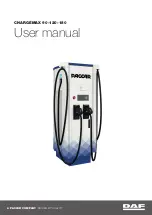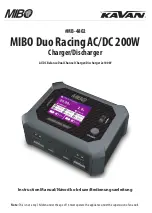
3
Safety Information
Grounding, AC Power Cord Connections
and General Charger Use
Risk of electric shock and fire.
• Before connecting power cord to outlet make sure
controls are set to OFF.
• Do not remove or bypass the grounding pin.
• Do not operate charger with damaged cord or
plug. Replace cord or plug immediately.
• Position power cord and charger cables away from
the hood, doors or hot/moving engine parts where
they could be damaged.
• Use extension cord only when absolutely
necessary. An extension cord up to 25 feet must
be 18 AWG, up to 50 feet must be 14 AWG, up to
100 feet must be 12 AWG and up to 150 feet must
be 10 AWG and extension cord plug and charger
plug must have the same number, size and shape
of pins.
• Never alter AC cord or plug provided. If it will not
fit outlet, have proper outlet installed by a
qualified electrician.
• Unplug power cord using plug rather than cord
when disconnecting charger from outlet.
• Charger power cord uses equipment-grounding
conductor and a grounding plug. Plug only into a
three-prong 120 VAC outlet that is correctly
installed and grounded in accordance with all
ordinances and local codes.
• When using an adapter refer to
Figure 1.
• Unplug power cord from outlet before cleaning or
maintaining charger. Turning off controls will not
reduce this risk.
• Do not operate charger after a sharp impact,
dropping or any other damage. Do not
disassemble charger. Call
Snap-on/Sun
Representative for repairs.
• Use only recommended attachments.
• Do not charge a frozen battery. Do not overcharge
a battery.
• Use charger only for lead-acid automotive
batteries and for automotive cranking assist using
procedure in this manual. Do not use charger for
charging dry-cell batteries.
Electric shock or fire can cause injury.


































